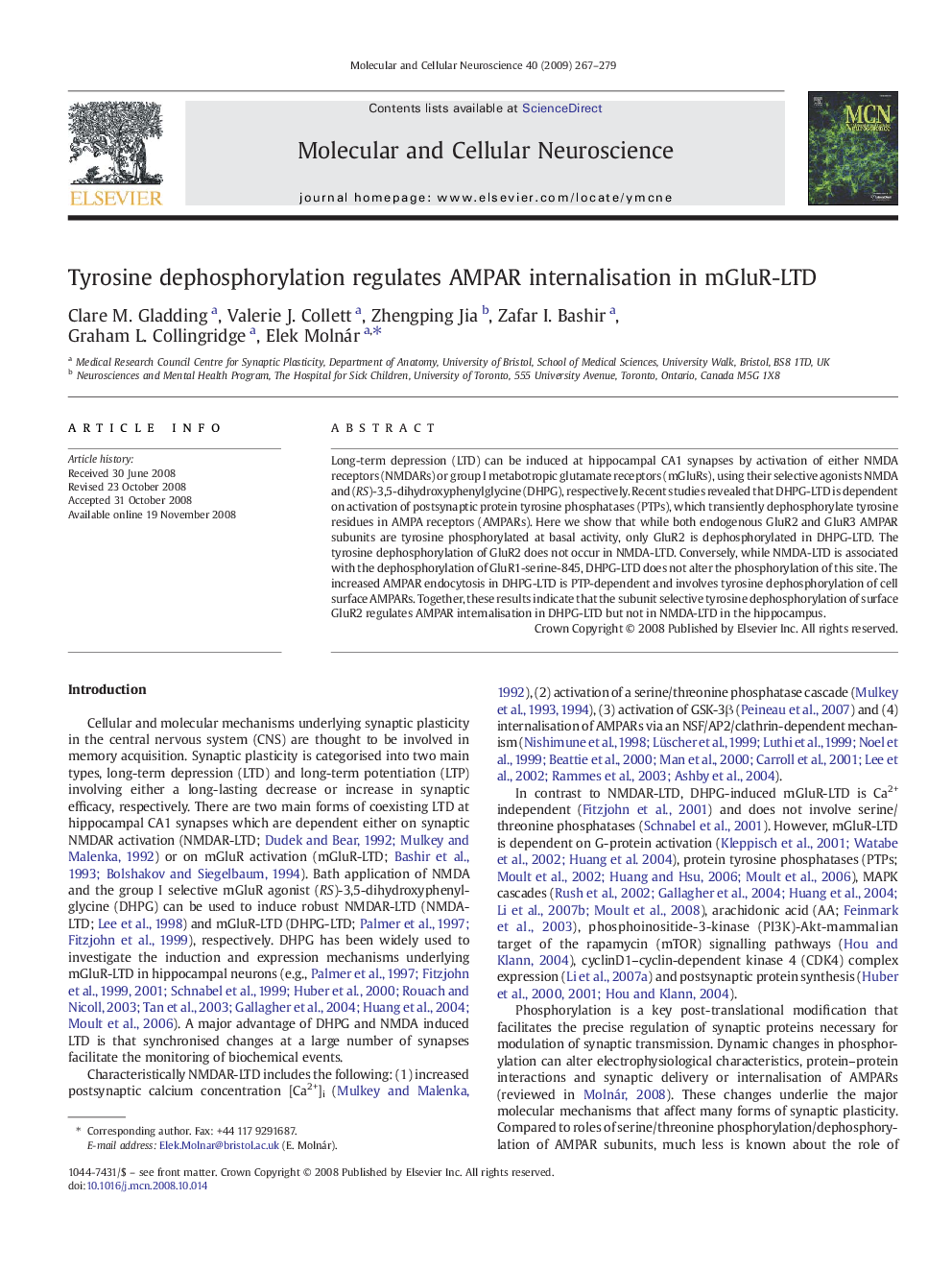| Article ID | Journal | Published Year | Pages | File Type |
|---|---|---|---|---|
| 10956723 | Molecular and Cellular Neuroscience | 2009 | 13 Pages |
Abstract
Long-term depression (LTD) can be induced at hippocampal CA1 synapses by activation of either NMDA receptors (NMDARs) or group I metabotropic glutamate receptors (mGluRs), using their selective agonists NMDA and (RS)-3,5-dihydroxyphenylglycine (DHPG), respectively. Recent studies revealed that DHPG-LTD is dependent on activation of postsynaptic protein tyrosine phosphatases (PTPs), which transiently dephosphorylate tyrosine residues in AMPA receptors (AMPARs). Here we show that while both endogenous GluR2 and GluR3 AMPAR subunits are tyrosine phosphorylated at basal activity, only GluR2 is dephosphorylated in DHPG-LTD. The tyrosine dephosphorylation of GluR2 does not occur in NMDA-LTD. Conversely, while NMDA-LTD is associated with the dephosphorylation of GluR1-serine-845, DHPG-LTD does not alter the phosphorylation of this site. The increased AMPAR endocytosis in DHPG-LTD is PTP-dependent and involves tyrosine dephosphorylation of cell surface AMPARs. Together, these results indicate that the subunit selective tyrosine dephosphorylation of surface GluR2 regulates AMPAR internalisation in DHPG-LTD but not in NMDA-LTD in the hippocampus.
Keywords
Related Topics
Life Sciences
Biochemistry, Genetics and Molecular Biology
Cell Biology
Authors
Clare M. Gladding, Valerie J. Collett, Zhengping Jia, Zafar I. Bashir, Graham L. Collingridge, Elek Molnár,
